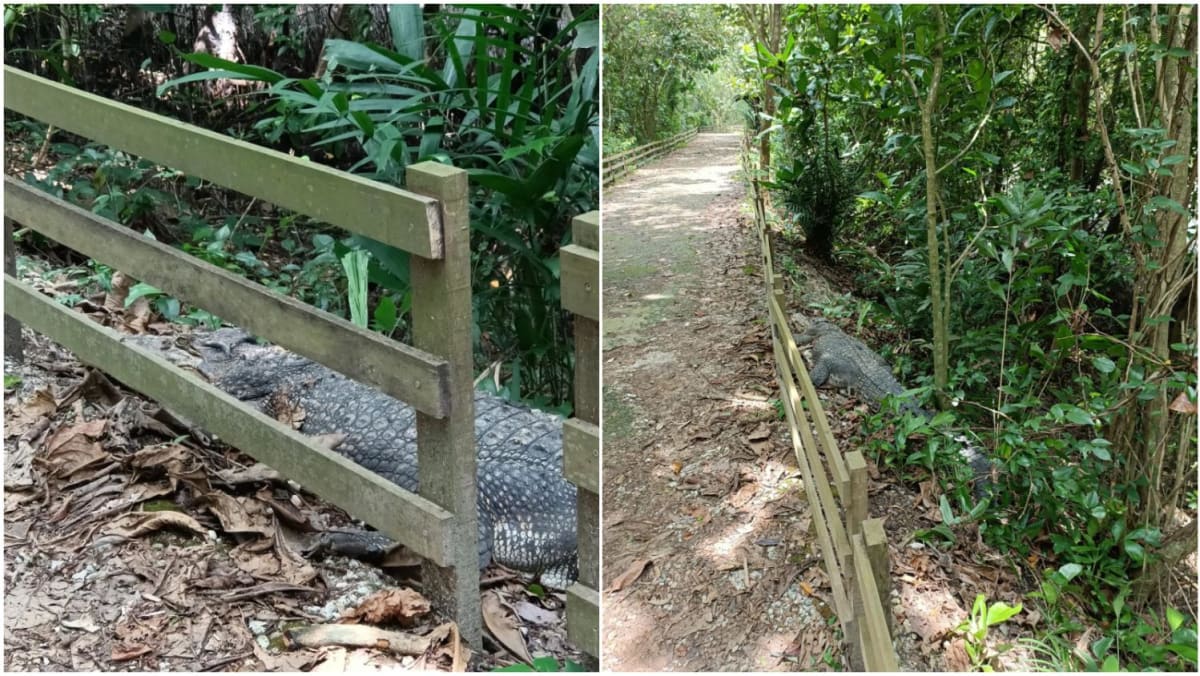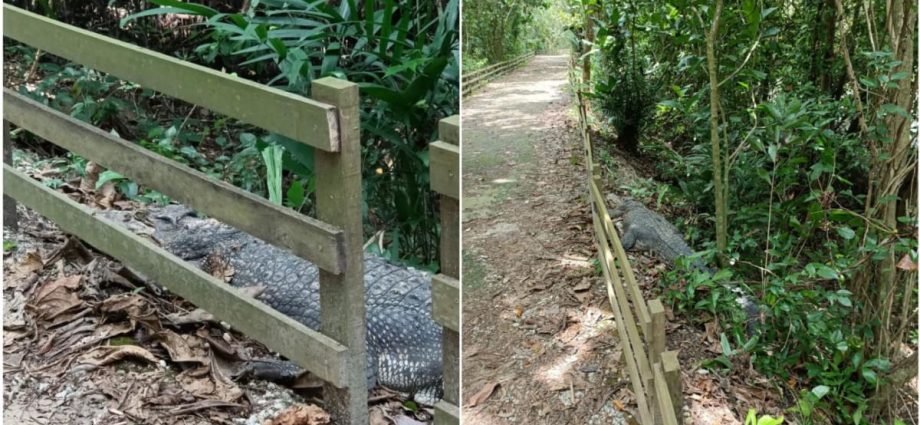
Responding to CNA’s queries about the crocodile sighting, NParks Group Director of Conservation, Lim Liang Jim said that NParks received a report that an Estuarine Crocodile was sighted behind the fence of a path at Sungei Buloh Wetland Reserve on 30 September 2022.
“NParks staff visited the site to check on the sighting, remained on-site to monitor the situation, and advised members of the public to keep a distance,” Mr Lim said.
“NParks staff actively patrol during the high tide, where crocodiles are often seen on land. The path is segregated by a fence which acts as a deterrence for crocodiles who might come up to the foot path to bask, move between waterbodies or rest during high tide. Crocodiles, like all wildlife, generally do not attack unless they are provoked.”
He added that such crocodiles occur naturally in the wild in Singapore. They feed and rest in brackish and freshwater areas and are usually found in the water or on mudflats away from visitor routes. The crocodiles hunt mainly at night and feed mostly on fish. The cold-blood creatures rely on external sources of heat, such as the sun, to warm up and hence usually come onto land to bask in the sun.
According to the NParks’ website, the Estuarine Crocodile, also known as the Saltwater Crocodile, is one of the largest crocodile species in the world and can grow to more than 5m in length.
It has a long snout and a broad, muscular tail with ridges. While crocodiles may appear bulky and clumsy, they can move very quickly over short distances, both on land and in water. They can become aggressive and attack, especially when provoked, whether on land or in water.
Mr Lim said that in event of a crocodile encounter, members of the public should remain calm and stay a good distance away from the animal, and not approach, provoke or feed it.
“Warning signs and advisory notices have been posted at areas where these animals are most often seen.
“Visitors should heed these signs, which advise the public to stay on the visitor routes and not venture off the designated paths.”

